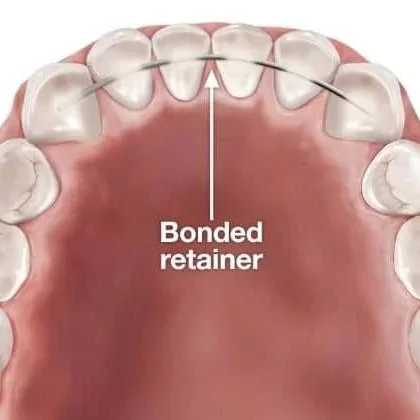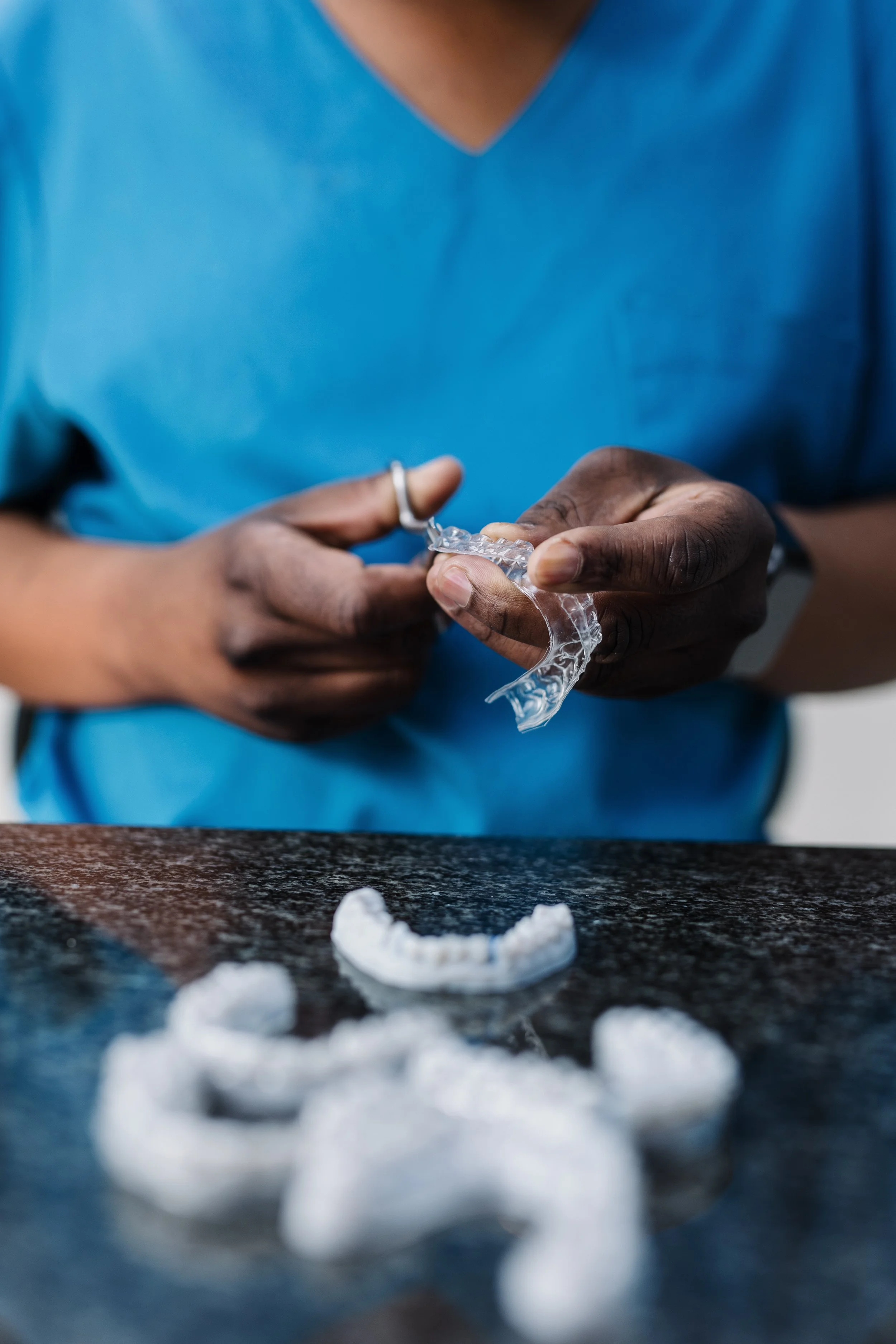Retainers for Teeth:
A Complete Guide for South African Patients
The day your braces come off is a big milestone. After months or years of treatment, you finally get to enjoy a beautifully straight smile. But there’s one last step in the orthodontic journey that’s just as important as the braces themselves: wearing a retainer.
At Hugo Orthodontics, we call retainers the “final chapter” in treatment. They make sure your teeth stay in place and your hard work lasts a lifetime. In this guide, we’ll cover everything you need to know about retainers for teeth in South Africa: what they are, why they matter, the different types, how long you need them, how much they cost, and the best ways to care for them.
What Are Retainers?
A retainer is a custom-made device designed to hold your teeth in their corrected positions after orthodontic treatment. Without one, your teeth will naturally drift back into their old spots — something orthodontists call “relapse.”
In short: braces straighten your teeth, retainers keep them straight.
Why Retainers Are Essential After Braces
When braces come off, your teeth are straight but not yet “set in stone.” The surrounding bone and gums are still adapting. Without support, teeth want to shift back toward where they started.
That’s why retainers after braces are not optional. They’re a crucial part of treatment. Wearing your retainer as instructed prevents relapse and protects your investment in orthodontic care.
Types of Retainers
There’s no one-size-fits-all when it comes to retainers. At Hugo Orthodontics, we provide different types, and advise you on what’s best for your smile, and your lifestyle.
1. Clear Retainers (Essix Retainers)
Made from transparent plastic.
Fit snugly over your teeth, similar to aligners.
Virtually invisible — most people won’t notice you’re wearing them.
Comfortable and easy to wear.
Usually replaced every 2-5 years. (1-2 years in severe grinders)
Pros: Discreet, easy to replace, great for nighttime wear, prevents tooth wear damage from tooth-grinding habit.
Cons: Can crack or warp if not cared for properly.
Best for: Adults and teens who want a nearly invisible option.
2. Hawley Retainers
Acrylic base with a thin wire that runs across the front teeth.
Customisable colours and designs.
Durable and adjustable by your orthodontist.
Slightly more noticeable than clear retainers.
Pros: Long-lasting, can be tightened or adjusted if teeth shift slightly.
Cons: More visible, may feel bulky at first. Higher risk of breaking if dropped accidently.
Best for: Younger patients, or those who want a durable long-term solution.
3. Permanent (Bonded) Retainers
A thin wire bonded to the back of your teeth (usually the lower front).
Fixed in place — so more difficult to lose, and you won’t forget to wear it.
Works 24/7 to prevent movement.
Requires careful cleaning and flossing
Diligent self-checking to ensure no unnoticed breakages. With breakages, teeth may be pushed in unwanted directions.
Pros: Always working.
Cons: Trickier to clean, can occasionally break or detach. Unnoticed breakages may cause serious adverse effects.
Best for: Patients at higher risk of relapse, happy with the more technically challenging home cleaning and life-long check-up commitments.
How Long Do You Have to Wear Retainers?
There’s no single answer, but here’s the general guideline:
First year after braces: Wear your retainer full-time, day and night.
After the first year: Switch to nighttime wear only.
Long-term: Many orthodontists (including us) recommend indefinite nighttime wear.
The truth is that teeth can shift at any age, not just immediately after braces. That’s why making retainers part of your nightly routine is the best way to keep your smile straight for life.
What It’s Like Living With a Retainer
Wearing a retainer becomes second nature pretty quickly, but here are a few things to expect:
Eating: Always remove removable retainers before meals. Permanent retainers don’t affect eating.
Speaking: You may lisp slightly at first, especially with a Hawley retainer. This usually disappears within days.
Sports: Store your retainer safely during contact sports and wear a mouthguard for protection.
Travel: Always carry your retainer case with you. Losing a retainer on holiday is more common than you think.
Pets: Dogs and cats love chewing retainers — always keep them in a case!
Can Retainers Straighten Teeth?
Retainers are not designed to move teeth into new positions — that’s the job of braces or aligners. Their main role is to hold teeth in place.
In very mild cases of shifting, a retainer may help guide teeth back slightly. But in most cases of relapse, orthodontic treatment is needed to correct the position before retainers can maintain it.
Retainer Costs in South Africa
One of the most common questions we hear is: “How much do retainers cost in South Africa?”
While costs vary depending on the type of retainer, here’s a rough guide:
Clear retainers (Essix): More affordable upfront, but may need replacing every 2-5 years.
Hawley retainers: Slightly more expensive but durable and adjustable. Lifespan roughly 5+ years.
Permanent retainers: Higher initial cost, but they can last many years if cared for.
Factors affecting cost:
Type of retainer.
Whether it’s included in your orthodontic treatment plan.
Replacement needs (lost, cracked, worn).
Individual practice fees.
Some medical aids may contribute, but many patients cover retainers as an out-of-pocket investment.
How to Care for Your Retainer
A retainer is only effective if it’s in good condition. Here are some key tips:
Clean daily: Use mild soap and lukewarm water. Avoid hot water — it can warp the plastic.
Skip toothpaste: Especially for clear retainers, toothpaste can scratch the surface.
Use a protective case: Never wrap in tissue — most retainers are lost this way.
Avoid heat: Don’t leave retainers in the sun, car, or near heaters.
Replace when needed: If it cracks, warps, or no longer fits properly.
For permanent retainers:
Floss carefully with threaders or interdental brushes.
Attend regular check-ups to make sure the wire is still intact.
Common Myths About Retainers
“I only need my retainer for a few months.”
False. Teeth can shift years after braces. Long-term nighttime wear is best.
“If I lose it, waiting a few weeks won’t matter.”
False. Teeth can start moving in just a few days or weeks. Always contact your orthodontist immediately.
“Permanent retainers last forever without maintenance.”
False. Bonded wires can break or detach. Regular check-ups are essential.
“Retainers hurt.”
Mostly false. A new retainer may feel tight, but it shouldn’t be painful.
Final Thoughts
Finishing braces is a major milestone — but your orthodontic journey isn’t complete without a retainer. Retainers keep your teeth from shifting, protect the investment you’ve made, and ensure your smile stays straight for life.
Whether you’re getting your first retainer, replacing a lost one, or deciding which type is best for you, Hugo Orthodontics is here to help.
Book your consultation today and keep your smile looking its best for years to come.
FAQs About Retainers:
-
Retainers are used to maintain the results of orthodontic treatment. Once braces or aligners move your teeth into their ideal positions, retainers hold them there while the bone, gums, and surrounding tissues stabilise. Without a retainer, teeth often begin shifting back toward their old positions — something called relapse. Retainers essentially “lock in” your new smile.
-
Most patients feel some pressure or tightness when they first start wearing a new retainer, but this usually fades within a few days. Unlike braces, retainers aren’t actively moving teeth — they’re simply holding them still. If your retainer is very painful or doesn’t fit properly, it may be damaged or your teeth may have shifted slightly, and you should see your orthodontist for an adjustment or replacement.
-
The short answer: for as long as you want your teeth to stay straight.
In the first 3–12 months after braces, full-time wear (day and night) is essential.
After that, most orthodontists recommend night-time wear for life.
Some patients try stopping after a few years and find their teeth begin to shift again. Wearing your retainer at night is a simple lifelong habit that protects your smile.
-
When you first start wearing a removable retainer — especially a Hawley retainer — you may notice a slight lisp or difference in speech. This is completely normal and usually disappears after a few days of practice. Reading aloud or speaking more often with the retainer in can help your tongue adjust quickly. Most patients find that their speech sounds completely normal within a week of wear.
-
Retainers are not designed to move teeth into new positions. Their job is to hold teeth in place after treatment. In very minor cases of shifting, a retainer might help guide teeth back slightly, but if your teeth have moved noticeably, braces or clear aligners are usually needed to correct the position. Retainers then keep the corrected result in place.
-
Cleaning depends on the type:
Clear retainers: Rinse with lukewarm water after each use. Gently brush with mild soap and a soft toothbrush daily. Avoid toothpaste, which can scratch the plastic.
Hawley retainers: Brush daily with mild soap and water. Soak occasionally in an orthodontic cleaning solution.
Permanent retainers: Brush and floss carefully around the wire using floss threaders or interdental brushes.
Never use hot water, bleach, or harsh chemicals — these can warp or damage the retainer.
-
Clear retainers typically last 1–2 years before they may crack, warp, or become discoloured.
Hawley retainers can last 5–10 years with proper care.
Permanent retainers may last for many years but occasionally need repair or replacement if the wire breaks or detaches.
Your orthodontist will check your retainer at follow-up visits to make sure it’s still effective.
-
It’s more common than you’d think — especially with teens. Retainers often get thrown away when wrapped in a tissue or left on a lunch tray. If you lose yours, contact your orthodontist right away. Waiting even a couple of weeks can allow teeth to shift enough that your replacement retainer won’t fit. To avoid this, always carry your retainer case with you.
-
Removable retainers should always be taken out when eating or drinking anything other than water. Eating with them in can cause them to crack or warp and allows food to get trapped, leading to bacteria build-up. Permanent retainers, on the other hand, don’t affect eating, but you’ll need to be extra thorough when brushing and flossing to keep the area clean.
-
A retainer that isn’t cleaned regularly can build up plaque and bacteria, causing an unpleasant smell or taste. To avoid this, clean it daily and store it in a dry, ventilated case. If your retainer still smells after cleaning, it may need professional cleaning or replacement.
-
Yes — and unfortunately, it happens often. Pets are attracted to the smell of saliva and will happily chew through a retainer. Always keep yours in a case and out of reach. If your retainer has been chewed, don’t try to wear it. Call your orthodontist for a replacement immediately.
-
If you stop wearing your retainer, your teeth can begin to shift back within days or weeks. Over time, this can undo months or years of orthodontic work. Even if you’ve had straight teeth for years, stopping retainer use can allow subtle movements that affect your bite and appearance. That’s why orthodontists recommend long-term night-time wear.
-
No. Retainers are custom-made for each patient’s teeth and bite. Wearing someone else’s retainer can damage your teeth, doesn’t fit properly, and risks spreading bacteria. Always get a retainer made specifically for you.
-
No. A properly fitted retainer won’t damage your teeth. If a retainer feels too tight or painful, it’s usually because it doesn’t fit correctly anymore (often due to not wearing it consistently). In that case, visit your orthodontist for an adjustment or replacement.









